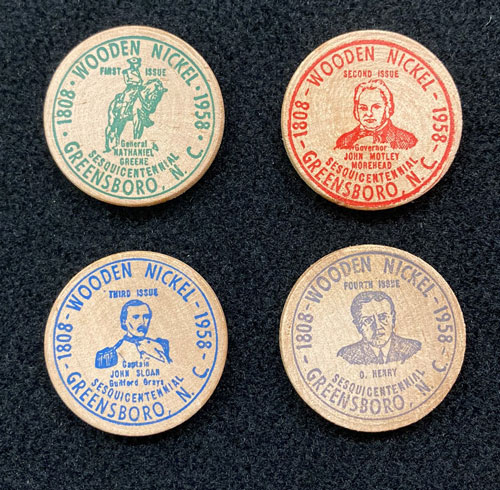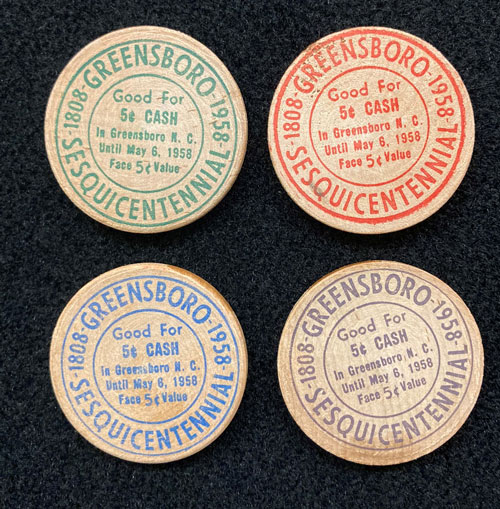

“Fifty years ago this month, the city’s 150th anniversary celebration featured a little bit of everything, including lots of trouble and a funny name.
“‘Even the kids know how to pronounce sesquicentennial,’ one editorial writer quipped. ‘(But) not one in a thousand can tell you what it means.’
“Over 10 days in May, sesquicentennial meant things like a nightly outdoor pageant complete with a cast of 1,250; simulated atomic bomb blasts; a dog that walked a 15-block parade on its hind legs; merchants handing out wooden nickels [with Nathanael Greene‘s name misspelled]; a marching band playing ‘Dixie;’ and pie-eating, beard-growing and husband-calling contests.
“Organizers even ‘prohibited’ women from wearing makeup and jewelry in public unless they bought certificates that allowed them to.
“‘It was like Mayberry,’ said Gayle Fripp, the Guilford County historian. ‘Andy Griffith could have been there.’
“But the headline turned out to be the weather. Because of heavy rains and sparse crowds, the celebration wound up mired in red ink and mud to match….”
— From “’58 festivity a washout” by Donald W. Patterson in the Greensboro News & Record (May 17, 2008)
By the time the city’s bicentennial celebration rolled around, the agenda reflected enormous civic and cultural upheaval. “Dixie” had disappeared from the playlist, for instance, and if wooden nickels had been issued they probably wouldn’t have been limited to dead white men.

